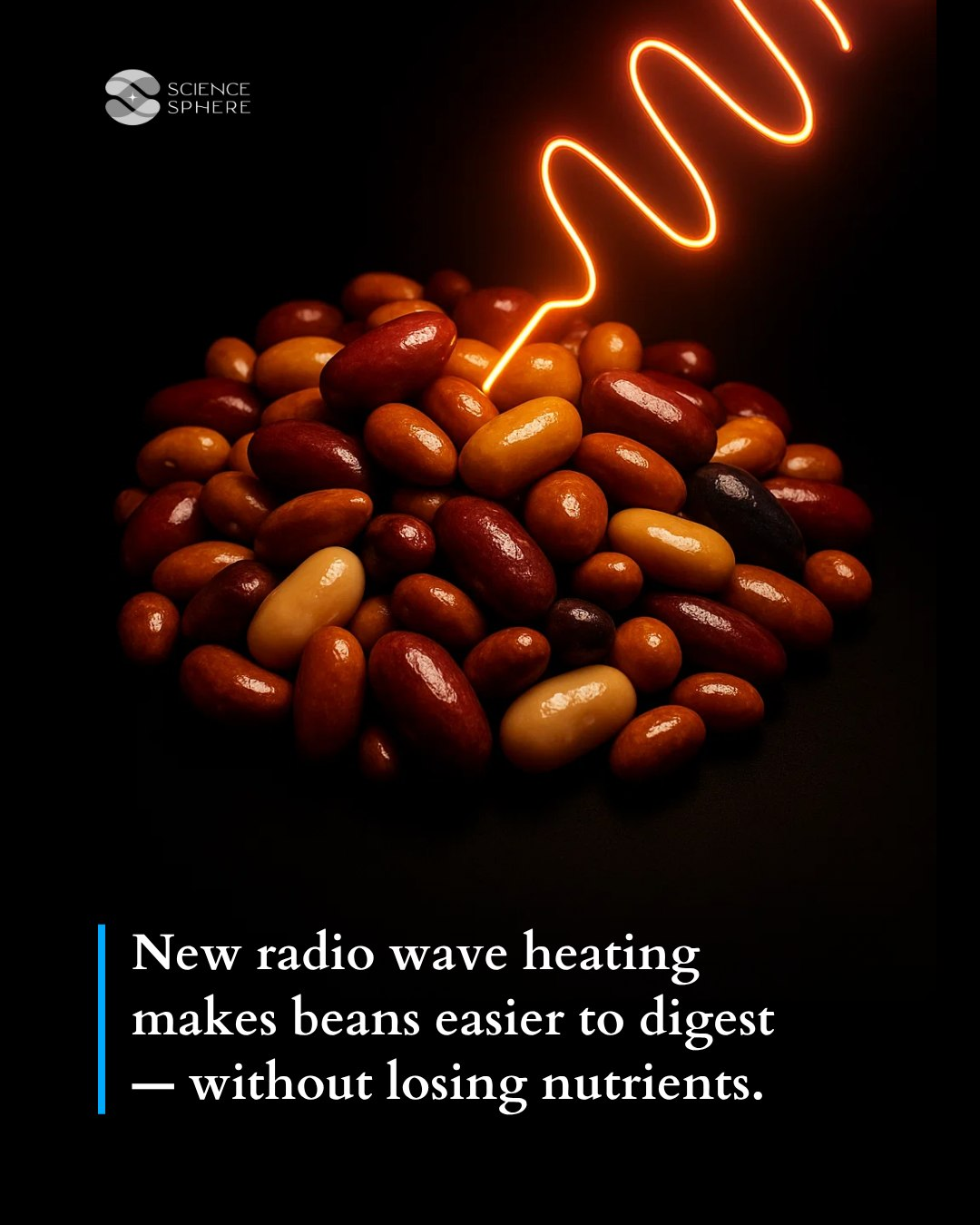Mildly Flatulent
-

A groundbreaking new heating method could make legumes like peas and beans significantly easier to digest—without sacrificing their nutritional value.
Researchers at the University of Saskatchewan have developed a technique using radio frequency (RF) waves to reduce “antinutrients,” natural compounds like lectins and phytic acid that interfere with digestion and nutrient absorption.
Unlike traditional industrial ovens that can overheat the surface while leaving the inside undercooked, RF heating uses targeted “selective heating,” where water molecules inside the legume rapidly heat up and turn into steam. This steam expands and bursts pores in the legume, effectively neutralizing antinutrients and increasing overall digestibility.
Using advanced imaging at the Canadian Light Source, the team confirmed this structural change and documented an 81% reduction in trypsin inhibitors—one of the key antinutritional compounds. Even better, RF heating preserves more nutrients and cuts processing time dramatically.
This innovation could transform plant-based food production, especially in regions where animal protein is scarce or expensive. By making legumes both more nutritious and environmentally efficient to process, this method brings us a step closer to sustainable, high-protein diets for a growing global population.
Follow Science Sphere for regular scientific updates
RESEARCH PAPER
Moirangthem et al, “Experimental and computational study of synchrotron X-ray micro-computed tomography imaging in peas and pinto beans after radiofrequency heating.”, Innovative Food Science & Emerging Technologies(2025)
